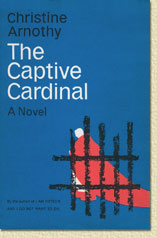The Captive Cardinal-Doubleday & Company Inc
|
||||||||||||||||||||
|
Présentation du livre par l'éditeur
|
||||||||||||||||||||
|
It is in 1976, and apart from America, Canada and Britain the entire world is communist. War is a thing of the past, and has been replaced with peaceful coexistence. A new American Ambassador and his wife arrive in Budapest, bringing with them the Ambassadress's brother – Harry Morton, a scholar. Morton knows he has only a short time to live, and he has come to Budapest with his one remaining purpose of meeting the Hungarian cardinal who for twenty years has been a voluntary prisoner in the American Embassy and of helping the cardinal to escape to America. Morton sees the cardinal as the representative of the European civilisation which he feels his own countrymen have shamefully abandoned, and he hopes, by making it possible for the cardinal to escape, to make his own death worth while. The cardinal will not hear of the scheme and at first refuses even to talk to Morton. But as the days pass, their relationship becomes intimate, and a strong bond of affection and mutual respect grows between them. Which of them will convince the other, in the end ? In the poignant confrontation of Morton and the cardinal, Christine Arnothy portrays the tragedy of a whole epoch. The story hardly ever moves outside the American Embassy; but within the embassy we meet a rich variety of characters apart from Morton and the cardinal : the Ambassadress, frivolous and bored; Tche Tu, first secretary of the embassy, though known to be a communist; Ilona, the delightful young Hungarian woman who holds in her heart all the rich heritage of an ancient race; Janos, the faithful old peasant servant of the cardinal; and always, in spirit, the whole Hungarian people, for whom the cardinal has long been a symbol and a figure of legend. |
||||||||||||||||||||
|
© Doubleday & Company, Inc. et Christine Arnothy
|
||||||||||||||||||||
|
© Christine Arnothy
|
||||||||||||||||||||
